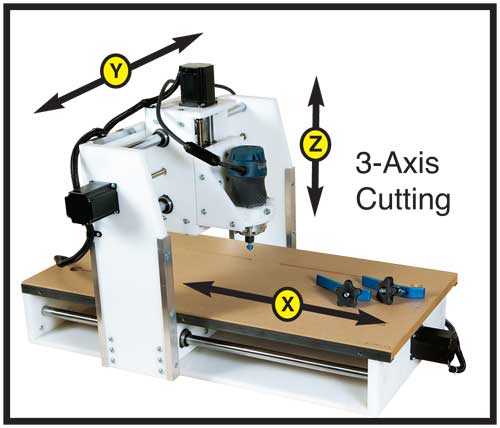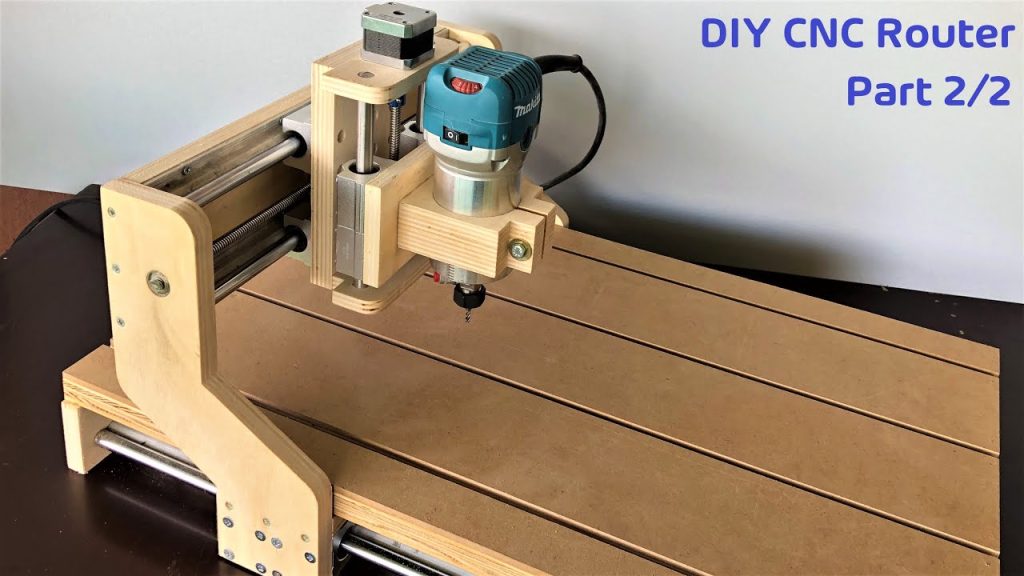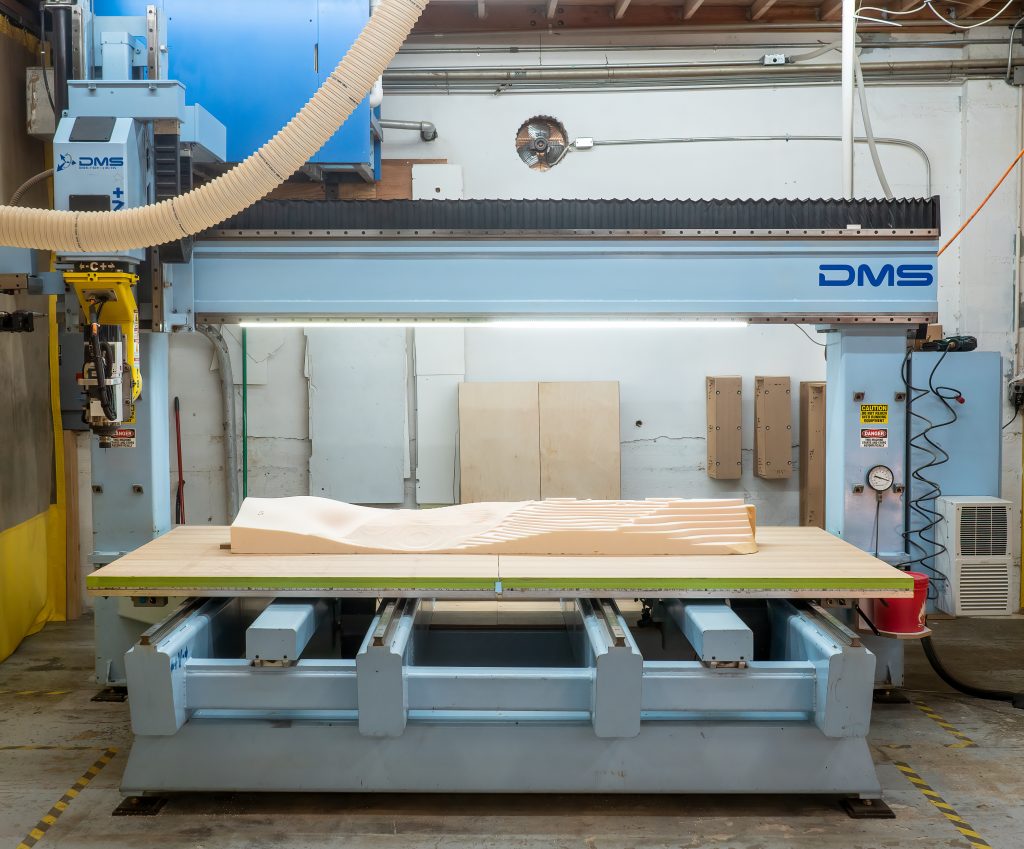Table of Contents
CNC routers are powerful tools that allow you to create intricate designs and patterns with ease. To get the most out of your CNC router, you need to wire it properly. However, wiring a CNC router can be a daunting task, especially if you’re not familiar with electrical work. In this guide, we’ll show you how to wire a CNC router step by step, so you can get started on your next project with confidence.
- Connect the stepper motors to the motor drivers using motor cables.
- Connect the motor drivers to the power supply using power cables.
- Wire the limit switches to the corresponding pins on the controller board using limit switch cables.
- Connect the spindle motor to the VFD using a spindle cable.
- Connect the VFD to the controller board using a communication cable.
- Wire the emergency stop button to the designated pins on the controller board.
- Connect the controller board to the computer using a USB cable.
- Finally, double-check all the connections to ensure they are correct and secure.
How to Wire a CNC Router?
Wiring a CNC router can seem like a daunting task, but with a little bit of knowledge and some careful planning, it can be done with ease. This article will guide you through the process of wiring a CNC router, from selecting the right components to connecting everything together.
1. Selecting Components
Before starting the wiring process, it’s important to select the right components for your CNC router. This includes choosing the right stepper motors, drivers, power supply, and controller board. Make sure to research these components and select ones that are compatible with each other and with your router.
Once you have selected your components, you should create a wiring diagram to plan out the connections between them. This will help you to visualize the wiring process and ensure that everything is connected correctly.
2. Power Supply Wiring
The first step in wiring your CNC router is to connect the power supply. This involves connecting the AC power cord to the power supply and then connecting the power supply output wires to the controller board and stepper motor drivers.
Be sure to follow the manufacturer’s instructions for wiring the power supply, as incorrect wiring can damage your components or cause other problems.
3. Controller Board Wiring
Next, you will need to wire the controller board. This involves connecting the board to the power supply, stepper motor drivers, and any other components such as limit switches or sensors.
Again, it’s important to follow the manufacturer’s instructions for wiring the controller board, as incorrect wiring can cause the board to malfunction.
4. Stepper Motor Wiring
The stepper motors are what drive the movement of your CNC router, so it’s important to wire them correctly. This involves connecting the motor wires to the stepper driver, making sure to match the wires to the correct pins.
You should also adjust the stepper driver settings to ensure that the motors are running at the correct voltage and current.
5. Limit Switch Wiring
Limit switches are used to prevent your CNC router from moving too far in any direction, which can cause damage to the machine or workpiece. Wiring the limit switches involves connecting them to the controller board and adjusting their settings to ensure that they are functioning correctly.
6. Spindle Wiring
If your CNC router has a spindle, you will need to wire it correctly to ensure that it is functioning properly. This involves connecting the spindle to the controller board and adjusting any settings such as speed or direction.
7. Emergency Stop Wiring
An emergency stop button is an important safety feature for any CNC router. Wiring the emergency stop involves connecting it to the controller board and testing to ensure that it is working correctly.
8. Grounding
Grounding is an important aspect of wiring any electrical system, including a CNC router. Make sure to properly ground all components to prevent electrical shock or damage to the components.
9. Testing
Once you have completed the wiring process, it’s important to test your CNC router to ensure that everything is functioning correctly. This involves testing each component individually, as well as running some test cuts to ensure that the machine is working as expected.
10. Troubleshooting
If you encounter any problems during the testing process, it’s important to troubleshoot the issue to determine the cause. This may involve checking the wiring connections, adjusting component settings, or replacing faulty components.
Overall, wiring a CNC router can seem like a daunting task, but with careful planning and attention to detail, it can be done with ease. By following the steps outlined in this article and using proper wiring techniques, you can ensure that your CNC router is running smoothly and efficiently.
Frequently Asked Questions
Here are some commonly asked questions about wiring a CNC router. Read on to find out more.
What is a CNC Router?
A CNC router is a computer-controlled cutting machine that is used to cut various materials such as wood, plastic, and metal. The machine uses a combination of software and hardware to control the movement of a cutting tool, allowing it to create precise cuts and shapes.
Wiring a CNC router involves connecting various components such as the motors, power supply, and controller board to ensure that the machine is properly powered and can be controlled by the software.
What are the Basic Components of a CNC Router?
The basic components of a CNC router include the frame, spindle, motors, controller board, power supply, and wiring. The frame provides the structure for the machine, while the spindle holds the cutting tool. The motors are responsible for moving the cutting tool along the x, y, and z axes. The controller board is the brain of the machine, interpreting the commands from the software and sending them to the motors. The power supply provides the necessary electrical power to run the machine, while the wiring connects all the components together.
Wiring is a critical component of a CNC router, as it ensures that all the components are properly connected and powered. A well-wired machine is essential for accurate and safe operation.
What Tools are Needed to Wire a CNC Router?
To wire a CNC router, you will need a few basic tools such as wire strippers, crimping pliers, a soldering iron, and heat shrink tubing. These tools will be used to strip and crimp wires, solder connections, and protect the wiring with heat shrink tubing. You may also need some basic electrical knowledge to ensure that you connect the wires correctly and safely.
It is important to follow the wiring instructions for your specific CNC router model, as each machine may have different wiring requirements.
What are Some Common Wiring Issues with CNC Routers?
Some common wiring issues with CNC routers include loose connections, incorrect wiring, and electrical interference. Loose connections can cause intermittent power loss or erratic machine behavior. Incorrect wiring can damage components or cause the machine to malfunction. Electrical interference can cause signal noise or other issues that affect the machine’s performance.
To avoid these issues, it is important to follow the wiring instructions carefully and ensure that all connections are tight and secure. You may also need to shield or ground the wiring to reduce electrical interference.
What are Some Tips for Wiring a CNC Router?
Here are some tips for wiring a CNC router:
- Follow the wiring instructions carefully
- Use the correct wire gauge for each connection
- Ensure that all connections are tight and secure
- Label all wires and connections to help troubleshoot any issues
- Protect the wiring with heat shrink tubing or other insulation
- Ground or shield the wiring to reduce electrical noise
- Test the machine thoroughly before using it to ensure that it is properly wired and functioning correctly
By following these tips, you can ensure that your CNC router is properly wired and ready to use.
In conclusion, wiring a CNC router may seem daunting, but with the right tools and knowledge, it can be a straightforward process. Remember to carefully plan your wiring layout, double-check your connections, and always follow safety precautions.
By properly wiring your CNC router, you can ensure that it runs smoothly and efficiently, allowing you to create precise and intricate designs with ease. Whether you are a hobbyist or a professional, having a well-wired CNC router is essential for achieving the best results.
Don’t be afraid to seek out help from experts or online resources if you are unsure about any aspect of the wiring process. With a little bit of patience and practice, you can become a master at wiring your CNC router and take your craftsmanship to the next level.
Request a quote today!
[contact-form-7 id="1578" title="Contact form"]
Please compress the file into a ZIP or RAR file before uploading. Alternatively, send through your RFQ by email.
enquires@unitymanufacture.com





